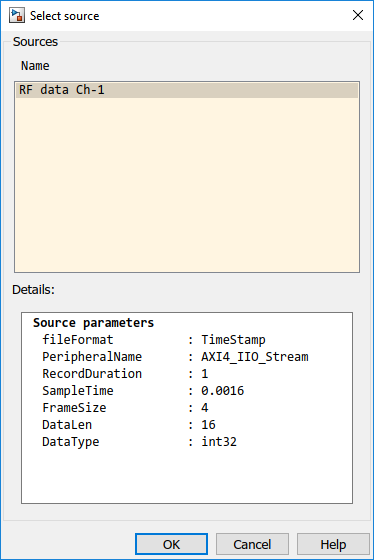AD9361 Tx
Connect hardware logic to AD9361-based Zynq transmitter
Use of this block is not recommended. Use AD936x Transmitter instead. For more information, see Extended Capabilities.
Add-On Required: This feature requires the SoC Blockset Support Package for AMD FPGA and SoC Devices add-on.
Libraries:
SoC Blockset Support Package for Xilinx Devices /
MPSoC /
ZCU102
SoC Blockset Support Package for Xilinx Devices /
Zynq-7000 /
ZC706
SoC Blockset Support Package for Xilinx Devices /
Zynq-7000 /
ZedBoard
Description
The AD9361 Tx block connects your hardware logic to the AD9361 transmitter hardware. In simulation, this block returns data to a file or output port. It does not connect to the radio hardware from simulation.
The block supports up to two channels to send data.
Examples
Limitations
In the hardware setup, set Hardware Board to one of the supported Xilinx boards. You can find the supported boards in the Libraries list at the top of this page. Set Add-on Card to
None.This block supports SoC generation using the SoC Builder tool. This block does not support the IP core generation workflow. For more information on workflows, see SoC Generation Workflows.


